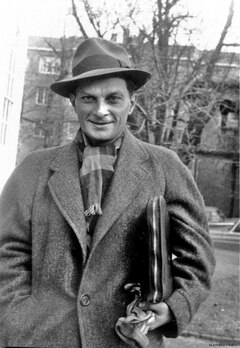Stanislaw Ulam was a Polish mathematician, known for a number of mathematical ideas (most notably the Monte Carlo method) as well as his significant contributions to the U.S. nuclear program.
Pre-war:
Stanisław Marcin Ulam was born in Galicia (now part of Poland) in 1909. An early interest in mathematics led him to study at the Lwów Polytechnic National University. He achieved some successes, which led him to travels to the United States; this eventually led to study at Harvard, and a friendship with John von Neumann. Ulam returned to the United States after a summer in Poland in August 1939, days before the German invasion of Poland.
The Manhattan Project:
In 1943, Ulam was invited by John von Neumann to join the Manhattan Project. His early work in the project focused on studying the hydrodynamic properties of implosions, which allowed the creation of the plutonium-based “Fat Man” bomb; without calculations like his, a plutonium weapon would not have been possible, and large amounts of uranium would have to be produced for a second bomb.
Post-war:
Ulam then teamed up with Edward Teller and Enrico Fermi to design a “Super” bomb — a device based on nuclear fusion rather than fission, and boasting far higher theoretical yields than fission-based weapons. This culminated in the Teller-Ulam design, in which multiple fission or fusion stages transfer energy to trigger a more powerful stage (most modern thermonuclear weapons use this design with a fission first stage that triggers a secondary hydrogen fusion stage). This work lead to the world’s first hydrogen bomb, tested by the United States in 1952.
Ulam wrote in his autobiography that he felt no “political, moral, or sociological” concerns about his work on the H-bomb: it was clear that “A-bombs of enormous size could be made” and the H-bomb was not qualitatively different in terms of destructive potential. At the very least, he felt that it would be better to examine the possibility himself rather than wait for “Russians or others” to do it.
Ulam left the field of nuclear research and continued to perform mathematical research until his death in 1984.
References:
Wikipedia: History of the Teller-Ulam Design
Ulam, Stanisław (1983). Adventures of a Mathematician. (autobiography).


